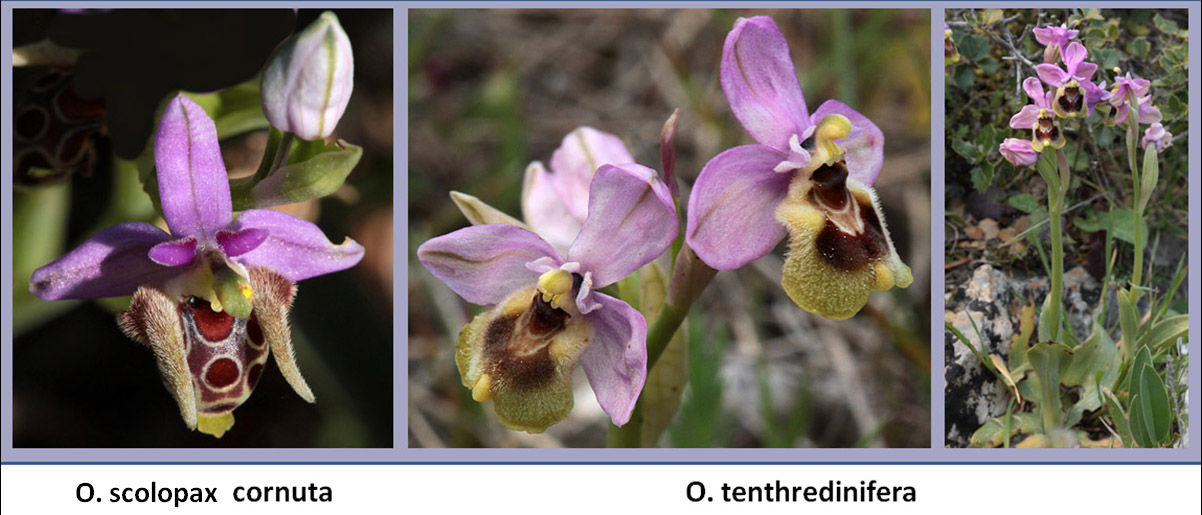|
Ophrys
is a genus of small orchids of stunning beauty. I have
been seeing these flowers since going on trips to the
southern Mediterranean; such as Greece, Turkey and
Morocco. They also grow in some other areas and even in
the British Isles. Here the Bee Orchid (Ophrys apifera)
is the prettiest example. All Ophrys tend to be referred
to as Bee Orchids. |
| Ophrys
is from the Greek
οφρύς
meaning ‘eyebrow’.
All are pollinated by fooling a male insect into
thinking the flower is a female and each species has its
own insect species pollinator. They grow from tubers and
the flowering tuber dies after producing a new tuber for
the next year |
|
 |
|
|
| They
fall into about ten groups but there are hundreds of species
and subspecies – the number is increasing. As if that was
not enough there are also nothospecies (natural hybrid) as
Ophrys
is one of the few orchids that create hybrids in
nature.
All this makes them hard to identify (I tend to leave
this to experts), however, there are some that are easily
recognized and very beautiful. In due course distinct groups
can be discerned. |
|
|
|
 |
|
Taxonomists
help to confuse things, as so often, by changing and switching
names, for example, O. lutea ssp sicula (lutea group) is now
O. sicula ssp lutea (sicula group),. Why??
Amongst
my favourites are:
O.
sicula and sicula ssp lutea.
The Yellow Bee Orchid. A medium sized species. Shines
brightly in the sunshine due to its colour.
O.
bombyliflora.
(Bumble-bee orchid) A small species, rather like a bumble bee and very
beautiful.
|
|
|
|
 |
|
|
|
O.
bornmeulleri & O. bornmeulleri ssp episcopalis
These
are similar enough to see they are the same group. The
subspecies has acquired yellow rabbit teeth (an
identification point).
O.
speculum (The
Mirror Orchid). Gorgeous with its large shining,
metallic-blue patch. Where you find it there will be a
lot, often dozens.
|
|
|
 |
|
|
O.
solopax ssp cornuta
- (Woodcock orchid) - Long horns, and very
pretty. Easy to identify you would think but many have
these projections. Others in the scolopax group can look
very different.
O.
tenthredinifera -
(Sawfly orchid) -
One of the taller, more robust types with larger
flowers.
There
are, of course, many others I could have mentioned but
these are, I think, a good start |
|
Can
we grow them?
Well,
yes…and no. They
are fully protected here and in other places and digging
up tubers would be likely to result in a dead plant.
They can be grown from seed but seed is not readily
available. Moreover, aftercare is difficult as
damping-off is a big problem. These orchids are
semi-parasitic and need specialist care and growing
medium. Many need summer heat and dryness so overall,
growing them is best left to the experts in orchid
raising. Pity.
Hunting
them for photography in the wild and finding one new to
me is exciting - one of life’s pleasures. |
|
|
|
|
|
|
|
